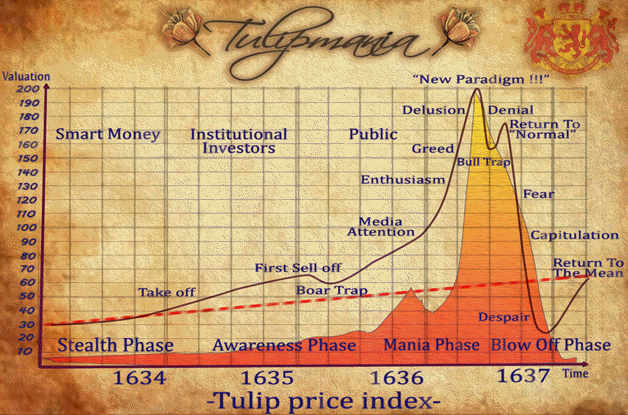
The idea of investing often conjures images of Wall Street jargon and hefty capital. It can seem out of reach for regular people. However, you don’t need a fortune to begin building wealth. In today’s money world, even a small amount like $100 can be your gateway to smart investing.
Many individuals feel scared by investing. They see high entry barriers and complex steps. This guide makes the process clear. It gives a simple roadmap for anyone ready to start investing with limited funds. We’ll look at easy-to-use platforms, beginner-friendly options, and real strategies. This will help your money work for you.
Why Start Investing, Even with Little Money?
The Power of Compounding Growth
Imagine your money making more money. Then that new money makes even more. This is called compound interest. It’s a powerful idea. Even small investments can grow big over time with this effect. The key is to start early, not to start with a lot of cash.
Think about the stock market. Over many decades, the S&P 500 index has returned about 10% on average each year. This means your money can really add up if you let it grow over years and years. Starting early gives your money more time to multiply.
Building Good Financial Habits
Starting with small amounts helps you build good money habits. It teaches discipline. You learn to save regularly. It makes you active about your personal finances. This is about more than just the money itself. It’s about forming a habit that sticks.
Putting money aside for investing makes you think ahead. You might find yourself checking your spending more often. This small step can lead to much bigger financial wins later on. It’s an easy way to get used to the idea of growing your wealth.
Long-Term Wealth Accumulation
Small, consistent investments can lead to a lot of wealth. This happens over decades. Your money can grow faster than inflation. It also beats what you’d earn in a typical savings account. You’re building a future where your money works hard for you.
Don’t let a small starting sum discourage you. Every bit adds up over time. It’s like planting a tiny seed. With time and care, it grows into a strong tree.
Setting Up for Success: Before You Invest
Define Your Financial Goals
Before you put any money in, think about what you want it to do. Are you saving for retirement? A house down payment? Or maybe building an emergency fund? Your goals will guide your choices. Write down what you want to achieve with your money.
Having clear objectives helps you pick the right investments. It also keeps you motivated. Knowing why you’re investing makes the process clearer. Your goals are your compass.
Understand Your Risk Tolerance
Every investment has some risk. Some have more than others. How comfortable are you with your investment value going up and down? This is your risk tolerance. It’s important to know this about yourself.
“The biggest risk of all is not taking one.” This quote rings true for investing too. But you should only take risks you understand. Figure out if you’re okay with potential big swings or prefer steady, smaller gains.
Create a Budget and Save Consistently
Even with $100, saving more is key for long-term success. A budget helps you see where your money goes. It makes it easier to find extra cash. Look at your spending closely.
Can you cut back on small daily expenses? Maybe that daily coffee could become an investment instead. Redirecting these small amounts can really boost your savings. This simple step fuels your investment journey.
Investing Platforms for Small Budgets
Micro-Investing Apps
Micro-investing apps make it super easy to start. These apps often let you invest spare change. They round up your purchases to the nearest dollar. Then they invest the difference for you. It’s like saving without even thinking about it.
Popular apps like Acorns or Stash make it simple. They link to your bank account. You can set up automatic small transfers. These apps are designed for new investors with little money. They help you get started without stress.
Fractional Shares
Want to own a piece of a big company like Apple or Google? Their stock prices can be very high. Fractional shares make this possible. You buy just a portion of a share. This opens up ownership of high-value companies.
Many online brokers now offer fractional shares. This means your $100 can buy a slice of a company you believe in. It removes the barrier of high stock prices. You get to invest in companies you care about.
Low-Cost Brokerage Accounts
Many brokerage firms today offer commission-free trades. This means you don’t pay a fee each time you buy or sell. Some also have no account minimums. This is great news for beginners. The trend of zero-commission trading has made investing cheaper than ever.
These accounts let you put your full $100 to work. You won’t lose a chunk to fees. Look for brokers known for their low costs. They make investing very accessible.
Beginner-Friendly Investment Options with $100
Exchange-Traded Funds (ETFs)
ETFs are like baskets of investments. They can hold many stocks, bonds, or other assets. When you buy one ETF, you instantly get diversification. This means your risk is spread out. They are great for beginners with small capital.
A common starting point is an ETF that tracks the S&P 500. This gives you a piece of 500 of America’s largest companies. Examples include SPY or VOO. They are a simple way to invest in the whole market.
Index Funds
Index funds are very similar to ETFs. They track a specific market index. They are passively managed. This means they just follow the index, not try to beat it. Because of this, they often have very low fees. Low fees mean more money stays in your pocket.
You can research different index funds based on your goals. Some follow the total stock market. Others focus on specific sectors. They offer broad market exposure.
Dividend-Paying Stocks (via Fractional Shares)
Some companies pay out a portion of their profits to shareholders. These are called dividends. Even owning a fraction of a dividend-paying stock can start generating passive income. It’s like getting a small payment just for owning the stock.
Companies like Coca-Cola or Johnson & Johnson are known for paying dividends. You can buy a small piece of them through fractional shares. This lets your money earn a little extra cash over time. It’s a nice bonus to your investment.
Your First $100 Investment: A Step-by-Step Plan
Choose Your Platform
First, pick the right app or brokerage. Think about your goals. Is it easy to use? What investment options does it offer? If you want simple investing with spare change, a micro-investing app might be best. If you want more control, a low-cost brokerage is better.
Take some time to compare. Read reviews. Choose the one that feels right for you. It’s an important first decision.
Fund Your Account
Once you’ve picked a platform, you need to put money into your account. This usually means linking your bank account. Most platforms have clear steps for this. You might transfer $100 from your checking account.
The process is usually safe and straightforward. Just follow the prompts. Your money will soon be ready to invest. It’s time to make it work for you.
Select Your First Investment
Now for the exciting part: choosing what to buy. For beginners with $100, starting with a broad market ETF is smart. It gives you instant diversification. This helps spread out your risk right away. You get exposure to many companies with just one purchase.
Think about an S&P 500 tracking ETF. It’s a simple, effective choice. Or perhaps an index fund. The goal is to start simply. You can always learn more and branch out later.
Automate Your Investments
The best way to build wealth is to invest consistently. Set up recurring automatic investments. Maybe put in $25 a week or $50 every two weeks. This builds a strong habit without you even thinking about it. It also uses dollar-cost averaging. This means you buy at different price points over time, which can lower your average cost.
Make saving effortless. Set up those automatic transfers. Watch your investments grow steadily. Consistency truly pays off in the long run.
Conclusion
Starting to invest doesn’t need a huge bank account. You can begin with as little as $100. The power of compounding means small amounts can grow significantly over time. It’s crucial to start early and invest consistently. This builds strong financial habits.
Don’t wait for the “perfect” moment. The journey to financial freedom starts with a single, small investment. Take that first step today. Open an account. Save your first $100. Your future self will thank you.


